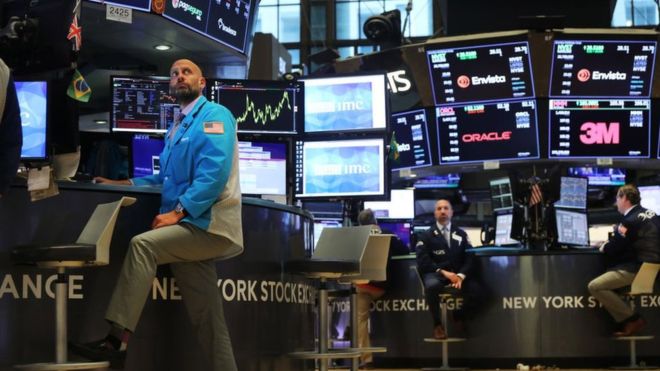
The US central bank has pumped more than $200bn (£160bn) into the financial system this week – the first time there’s been such an intervention since 2008.
The Federal Reserve’s aim was to stabilize what is usually a calm part of the market.
Interest rates in the so-called “repo market” had shot up to 10% in some cases – although the cost of borrowing in that market more typically hovers around the benchmark rate set by the Fed – around 2%.
So what happened and should we worry?
Banks, hedge funds and other players borrow money regularly on a short-term basis to ensure their books are in order, no matter what their daily activities.
The borrowers typically offer government bonds or other high quality assets as collateral, which they repurchase, plus interest, when they repay the loan – often the next day.
Those repurchase agreements give the repo market its name.
This is a huge market, with some $3tn changing hands each day, according to the US Office of Financial Research.
Under normal conditions, interest rates in the repo market are low, since the loans are considered safe and there’s plenty of cash on hand.
But this week the cost of borrowing shot up – toward 10% in some cases. And the rate at which banks lend to each other – the Fed’s benchmark – exceeded 2.25%, the top of its desired range.
The rise prompted the Fed to take action. Four times this week, it injected money into the market, offering to buy up to $75bn in treasuries or other assets from banks in a bid to boost bank reserves and keep them lending.

